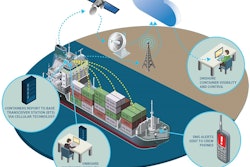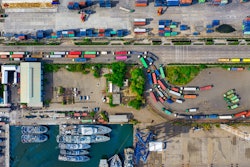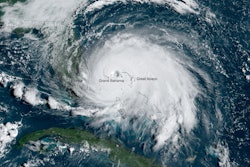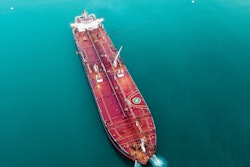
The Digital Container Shipping Association (DCSA) has released its first standards for data flows.
Earlier this month, the group launched an "Industry Blueprint" that sets out current standards for the processes used in container shipping. The hope is that carriers will align to it when delivering "digitilization and standardization initiatives in the industry in the future." The blueprint includes a glossary of terms, a process catalog and process maps for three journeys: shipment, equipment and vessel.
Nearly 70% of the market is represented in the group. members include, AP Moller-Maersk, Hapag-Lloyd, MSC, ONE and CMA-CGM as well as (pending regulatory approval) Evergreen Line, Hyundai Merchant Marine, Yang Ming Marine Transport Corporation and ZIM Integrated Services.
Breaking down the siloes
As a business that is driven by customer demand, ORBCOMM has always ensured that interoperability and openness lie at the heart of various products. For example, VesselConnect – ORBCOMM’s comprehensive solution for monitoring reefers at sea – creates a wireless network on a ship that enables the seamless transmission of real-time container data. The system does not require connection to a land based cellular network and can integrate with satellite data, allowing reefer data to be sent to the shipping company’s back office applications. These simple infrastructure and hardware requirements mean that the system can integrate with AIS vessel data and vessel stowage plans as well as data from other telemetry system and wireless technologies.
In addition, the new CT 3000 series, the next generation of ORBCOMM’s refrigerated container telematics devices, are small, quick to install and, crucially, give ocean carriers, inland barge operators, ports, depots, 3Ps and other members of the industry the ability to monitor containers and shipments that they do not directly own or control. These are just two examples of how agnostic products need to be able to integrate data from many different sources and to work not only for containers and vessels, but also trailers, chassis, gensets and truck units. Tech suppliers need to integrate to meet the needs of customers and the wider supply chain.
A new ecosystem
As the hardware behind IoT and telematics becomes mature, focus must now shift to the best ways to present this data to all stakeholders, combining and integrating datastreams across all platforms and enterprise software. In effect, a system of systems is required to ensure that not one platform dominates and that there is an ecosystem that allows users to integrate multiple smart devices and suppliers. This will require a new kind of DeviceCloud middleware that can channel data from any device into any enterprise software.



















